
Polyneura latissima
Crisscross Network, Network Red
14 March 2024
Point Holmes, Strait of Georgia, B.C., Canada
Tide: 3.1 feet at 15:54 PDT (measured at Little River Tidal Station)
Weather: Hazy, 50% cloud cover, wind East 5 to 10 km/hour, sea rippled, humidity 65%, 9 ˚C.
Moon: Waxing Crescent (27.6%, 4 days); Next Phase, First Quarter, 16 March 2024 at 9:10 pm PDT; Previous Phase, New Moon, 10 March 2024 at 1:00 am PDT.
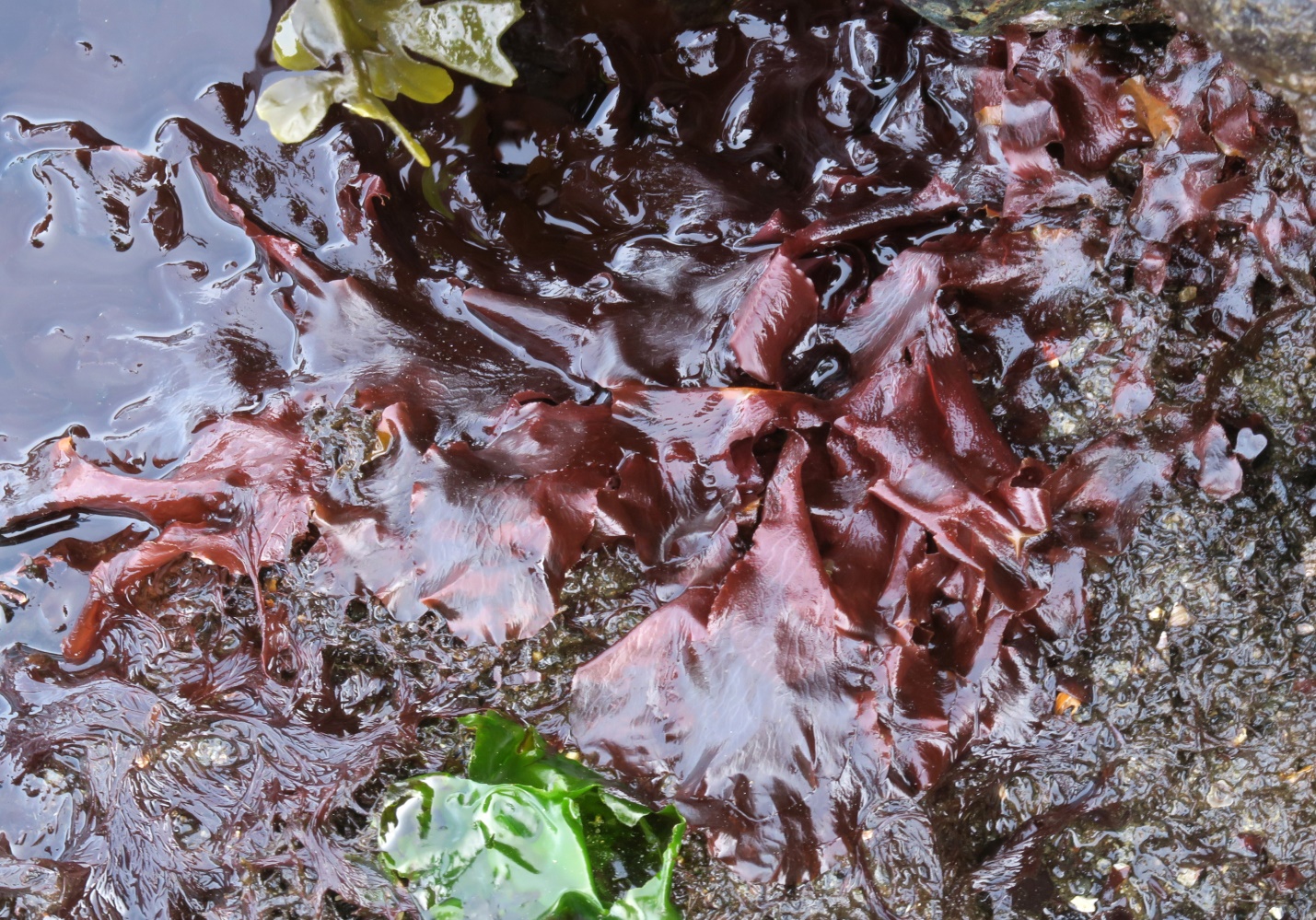
Figure 1: At the edge of a tide pool these blades of Polyneura latissima lie like a cast off shawl of crinkled wavy red silk. If you look closely you will observe the prominent veins that permeate the thallus. Point Holmes, Strait of Georgia, B.C., Canada. March 14, 2024. Photo ID 27635 ©Seaweedwhisperings.com
Person 1:
We’re on site on an earlier date than previous visits. We had then only found Polyneura latissima well past prime. Today it is fresh and vibrant.
With washed ashore specimens and identification discussions held over these past years there had been a hint of futility and giving up to this seaweed. Today what I see is the vibrancy and confidence of youth, as the young blades reach out.
The crisscross vein appearance is not yet well developed.
What I sense is that this seaweed starts out strong and directed like many life forms, but very quickly faces adversity. It becomes confused rather than resolute or resilient. Then it gives up, becoming old and weak..., then fades away.
A plus of this energy is to quickly make way for a new generation to emerge, and hopefully excel beyond the older generation.
Polyneura latissima prefers protected vertical faces, particularly with a bit of overhang. Perhaps it can hang on longer here in adverse conditions.
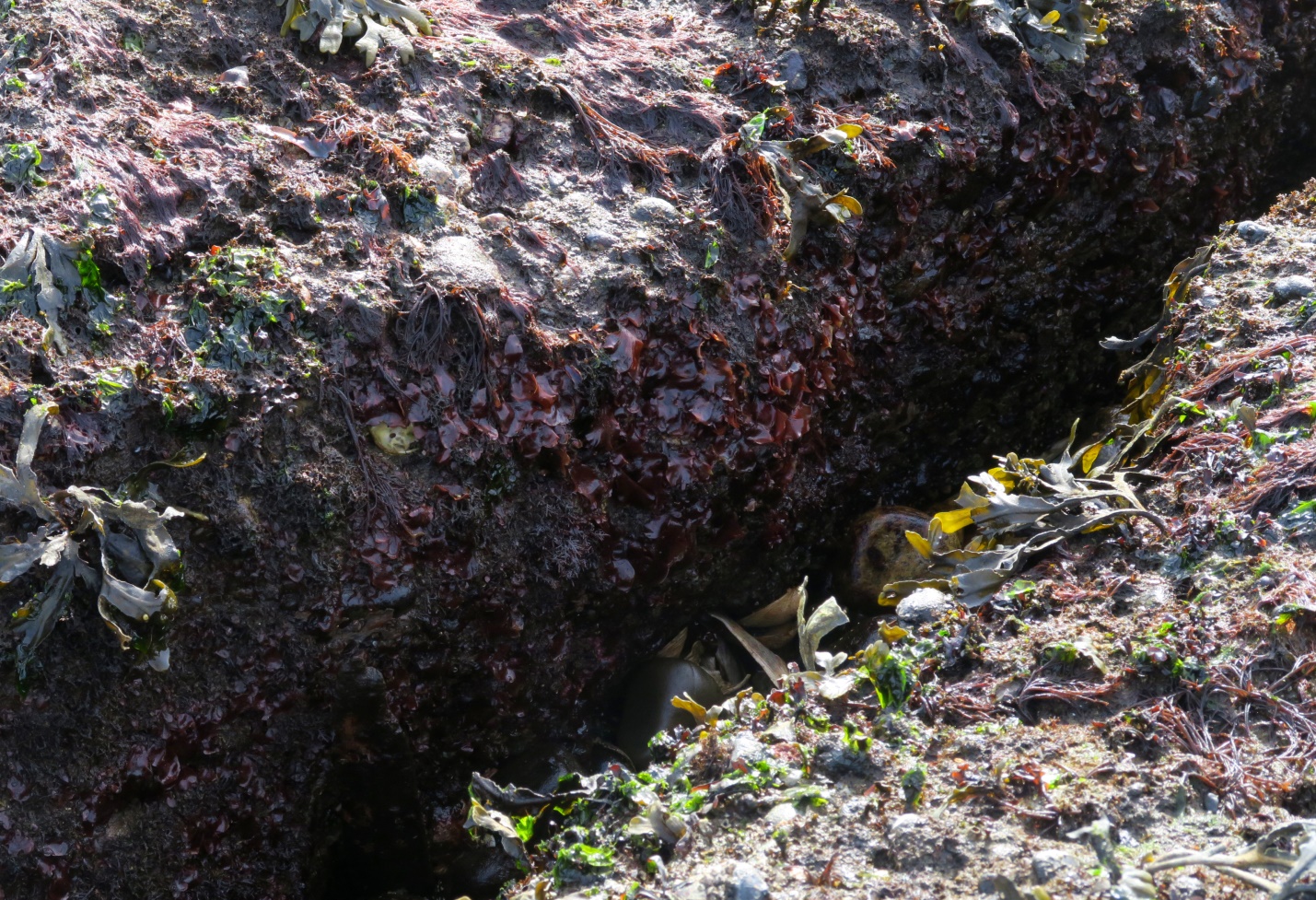
Figure 2: This image depicts the ‘vertical faces’ of rock that Crisscross Network Red favors. This early in the season the individual thalli are still growing, but already you can see the leafy reds predominate in the channel between the rocks, and a different array of macroalgae flourish on the exposed rock surfaces. Point Holmes, Strait of Georgia, B.C., Canada. March 14, 2024. Photo ID 27636 ©Seaweedwhisperings.com
Person 2:
Early season lover.
Shaded spots.
On the sides of narrow channels.
Drapes quite closely to the substrate (vertical or otherwise) when tide is out, yet is still somewhat wavy looking too.
Enjoys shading provided by Cryptosiphonia woodii.
Red.
Crinkled.
Delicate blade.
Veins are prominent; they join up and then part, join up and then part, covering the surface of the blade all the way to the margins in this fashion.
Polyneura, it just struck me that you are growing in the “veins of water” between these rock outcrops.
Are you shy? Too tender for this world at times...?
Very sensitive? Full exposure to sunlight is too harsh for you, perhaps?
What passes along your networks of veins, Polyneura?
Messages?
Questions?
Nourishment?
Love?
Is the crisscrossing (of veins) to serve as much area as possible? So you miss nothing?
Do things get “lost” in the holes – the spaces between the veins?
Or sometimes at the crisscrosses do things get sent down the wrong channel?
Mostly though it seems to work out in the end.
Polyneura latissima I’ve seen you earlier today at another location. There you had been torn from your holdfasts, your home, and were lying dying in the shallows.
As you die, you bleach (fade) to a bright orange color – it is distinctive, like the blaze orange hunters wear as safety clothing. Like that clothing, when you are fading your orange coloration is very “high-vis”; the orange is almost like one you’d often NOT encounter in nature. But it is seen in nature, in you.
When you are bleaching like this sometimes the color change from burgundy red to high-vis orange comes in patches; it is like separating yourself into camouflage. When this happens no clear ‘form’ is understood, your whole cannot be discerned. Is this how you fail? When you lose your complete form and “part” in too many segments? Is that the problem – when you part but can no longer “join up” again?
This seaweed looks delicate with its translucent blades and veins that are clear for all to see. Maybe these traits allow you your ultra-keen sensitivity. And maybe they also mean that you cannot hide anything much, even if you want to.
Certainly when the long days and more extreme low tides of late spring and early summer arrive you cannot persist. Maybe it’s all just too much for your senses. Maybe then your season is complete.
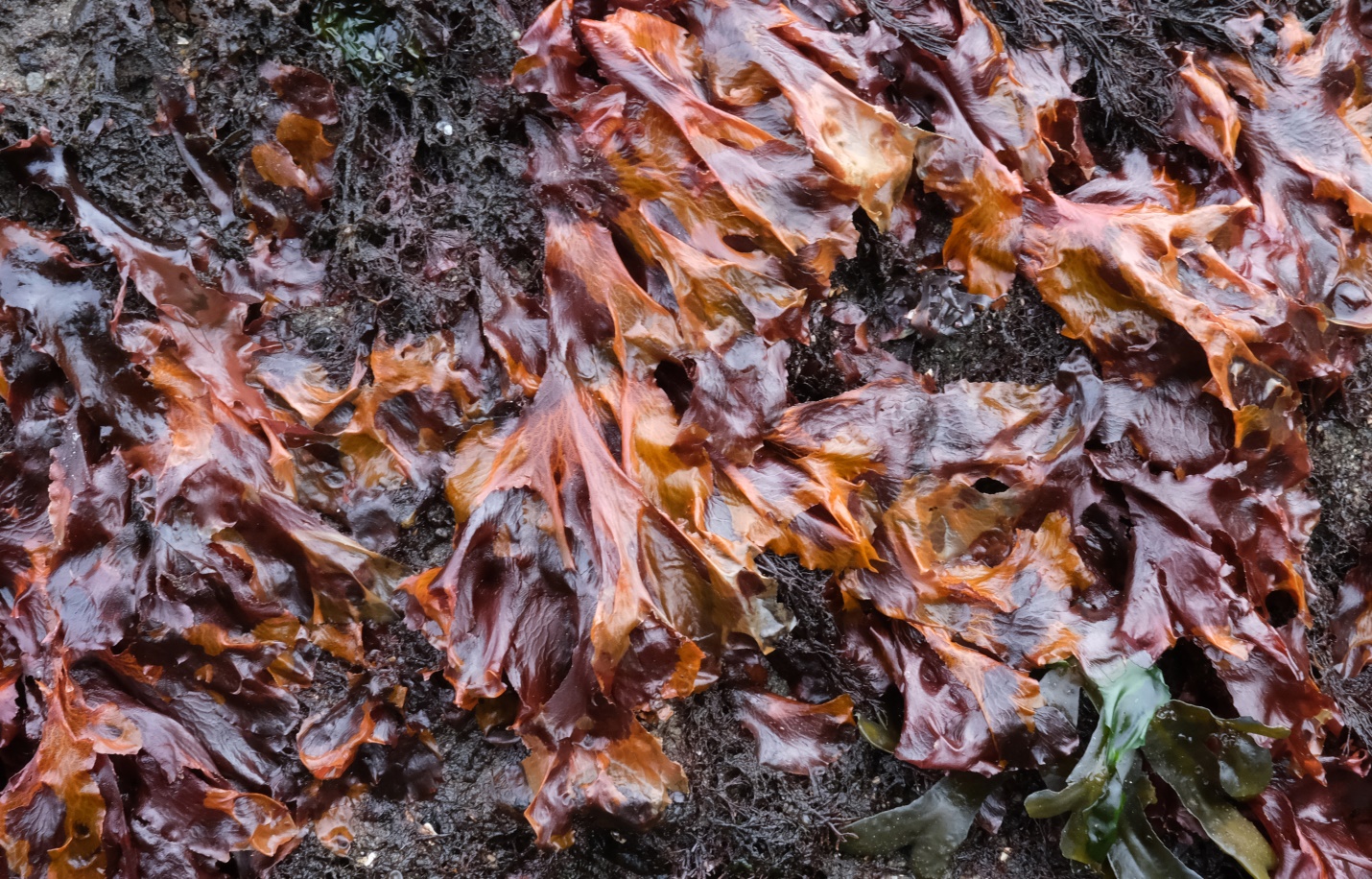
Figure 3: Damaged by too much light or too much frost, conditions too harsh for them, these blades turned overnight from all red to patches of red and blaze-orange. Point Holmes, Strait of Georgia, B.C., Canada. March 24, 2022. Photo ID 27637 ©Seaweedwhisperings.com

Figure 4: Floating in very shallow water at this sandy beach, a cluster of Polyneura latissima blades is bleaching its color. This process is well under way with the Plocamium pacificum (far left, with thalli ranging from white to pink to red) and to a far lesser extent with the bumpy red blade of Chondracanthus exasperatus. The Crisscross Network thallus is in some places now almost completely bleached of color and in many places is flaming orange in color. This shade of orange stands out from a distance. Kye Bay, Strait of Georgia, B.C., Canada. March 14, 2024. Photo ID 27638 ©Seaweedwhisperings.com
Further Observations & Impressions:
Veins have a crisscross pattern that leaves spaces between them that are roughly diamond shaped. The ‘flow’ of the veins as they crisscross is a bit longer than it is wide, so the direction of movement is forward but the progress is slowed by the regular bending back to join up again formation. The shortest distance between two points is a straight line. Polyneura latissima doesn’t “do” straight lines.
So this pattern to the veins..., it is like there is a spreading out to seek new things, learn, perhaps to gather resources and fuel, and then a coming back to join up with another vein again. Does this joining up give the opportunity to mingle and to share what was learned? It appears that this is so. But the sharing point is not long, and soon the veins part ways yet again for another exploration. And experience from that new ‘area’ can be shared at the next meeting point.
The veins of Polyneura do not get larger the farther they go; is it possible then that some things get left behind, or does all that has been found and shared in earlier ‘travels’ get somehow condensed so it can be carried in the same sized channel?
Maybe that’s what the ‘diamond’ shapes between the veins are for – storage places for things learned. So, can movement along the path go both directions in the veins? How easy is it to go back towards the start? How great is the pull to keep going forward? Maybe the key is that things need to be wholly integrated so that the totality of the veins and the space between them is a net whole.
And “net” is another way of looking at this pattern of veins. They do look like a net. And any good net is designed to hold things of certain size in and to release anything smaller. Maybe this is key for Polyneura – knowing what to release and what to keep active in its net of veins.
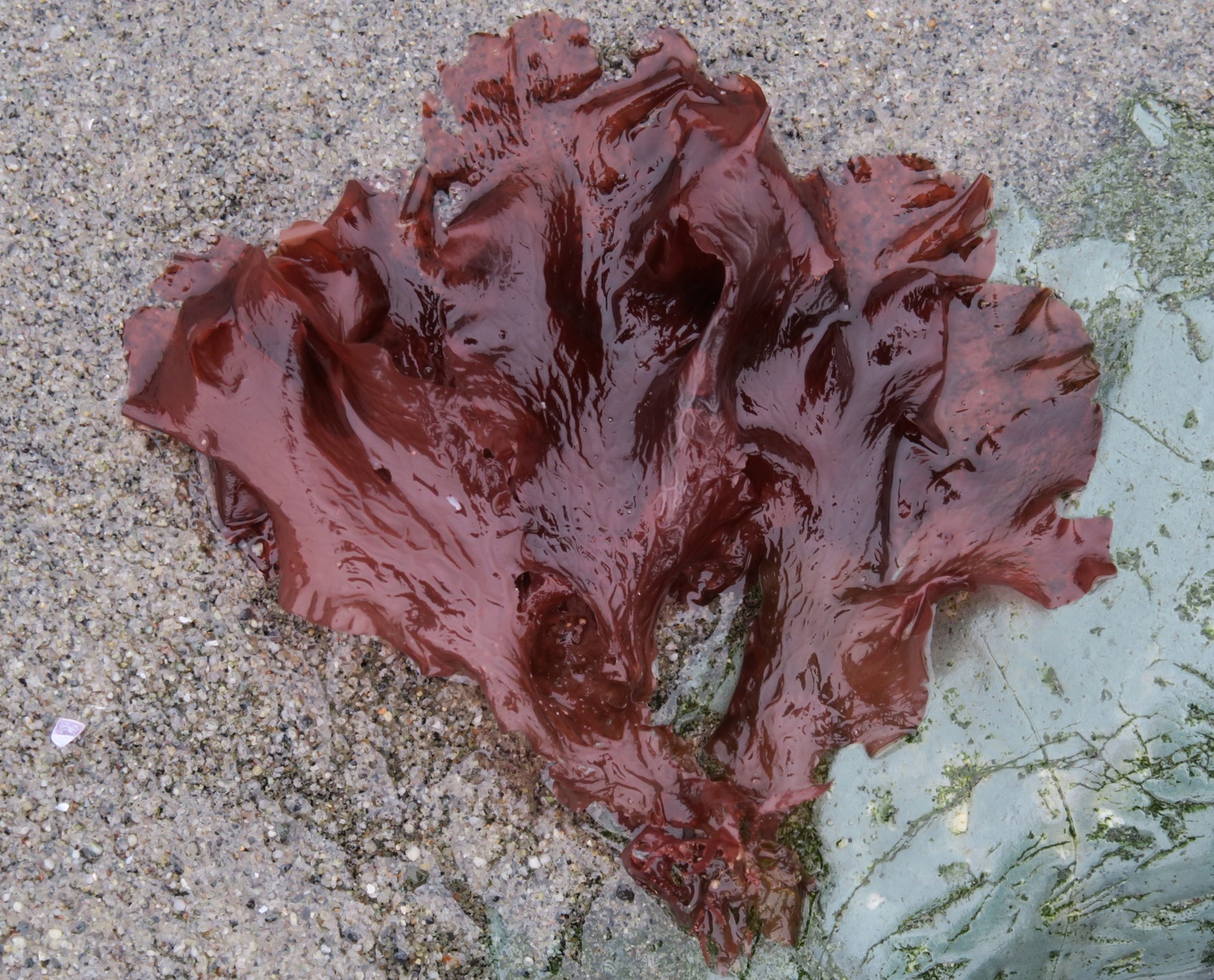
Figure 5: Freshly dislodged from its home, this Polyneura latissima thallus has retained its color; it shows the crisscross network of veins and the overall morphology very well. Point Holmes, Strait of Georgia, B.C., Canada. January 14, 2022. Photo ID 27639 ©Seaweedwhisperings.com
Discussion:
Why is it only in death that Polyneura latissima reveals its orange pigmentation – a coloring that calls attention so much more loudly than its prime-of-life red? Is it simply that you rarely display this “flaming inner orange” nature of yours, but it is always there, Polyneura? An ever present yet hidden influence beneath your more sedate outward look.
At times we can see that the high sensitivity of this seaweed becomes a problem. If you’re sensitive to everything, or even many things, then you can’t focus well on your path. Distraction by all that your senses alert you to can confuse you or pull you off course. For the sensitivity to be a talent, Polyneura needs to remember themselves amongst the noise of other input. They have a keen awareness of everything coming at them but they need to be able to evaluate and interpret it in an appropriate way.
Maybe that is what the diamond spaces are for, the spaces between the networks. They process information appropriately, and at times they can then perhaps allow it to fall through and be released as insignificant, thus preventing it from being held and accumulating as a distracting side-track or an ever accumulating burden.
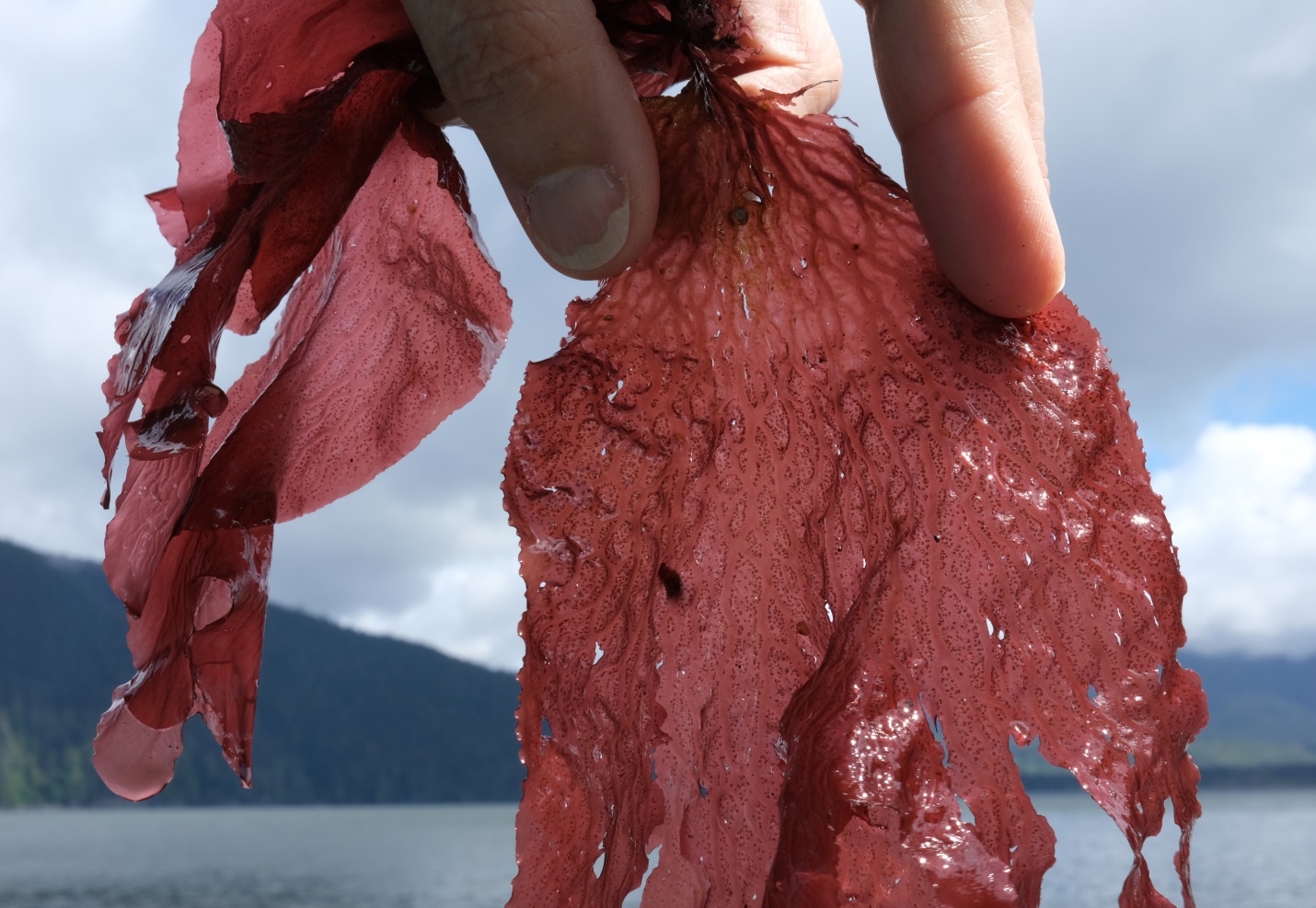
Figure 6: A very mature cluster of Polyneura latissima was found cast ashore here in the drift and held aloft to reveal its key identification features. The network of veins is clear as are the dark spots between them which are reproductive structures. Mill Bay, Port San Juan, B.C., Canada. May 19, 2022. Photo ID 27640 ©Seaweedwhisperings.com
Biology & Natural History Information:
Description:
Thallus is a thin, crinkly, rose-red blade, to 30 cm (12 in) tall and about half as wide, that may be irregularly divided and are somewhat wavy at the margins. A characteristic feature is the network of anastomosing (crisscross or linking) veins that permeate the thallus. The veins which run from near the holdfast to the margins of the thallus, branch and fuse back into each other, producing a net-like appearance; this is readily visible if backlit. Often the blade has small bumps (cystocarps) and it may develop holes. This species is most commonly found early in the year, and early spring is when it is at its best.
Habitat:
Found in the low intertidal and subtidal on rock in semi-exposed to semi-protected habitats.
North Pacific Distribution:
Prince William Sound, Alaska, to Baja California, Mexico; Commander Islands, Russia. The “type locality” is Esquimalt Harbour, Vancouver Island, Canada; it was noted by Dr. Lyall and C. Wood as collected both dredged and adrift.
Remarks:
Genus name, Polyneura, derived from the Greek, “many nerves”. The species name is from the Latin, and adjective meaning, widest or very wide. Extracts from Polyneura have been shown to inhibit viruses.
Classification:
Phylum: Rhodophyta
Class: Florideophyceae
Order: Ceramiales
Family: Delesseriaceae
Genus: Polyneura
Species: Polyneura latissima (Harvey) Kylin 1924
Former name(s) : Hymenena latissima Harvey 1862; Nitophyllum lastssimum (Harvey) J.Agardh 1898; Nitophyllum macroglossum J.Agardh 1898.
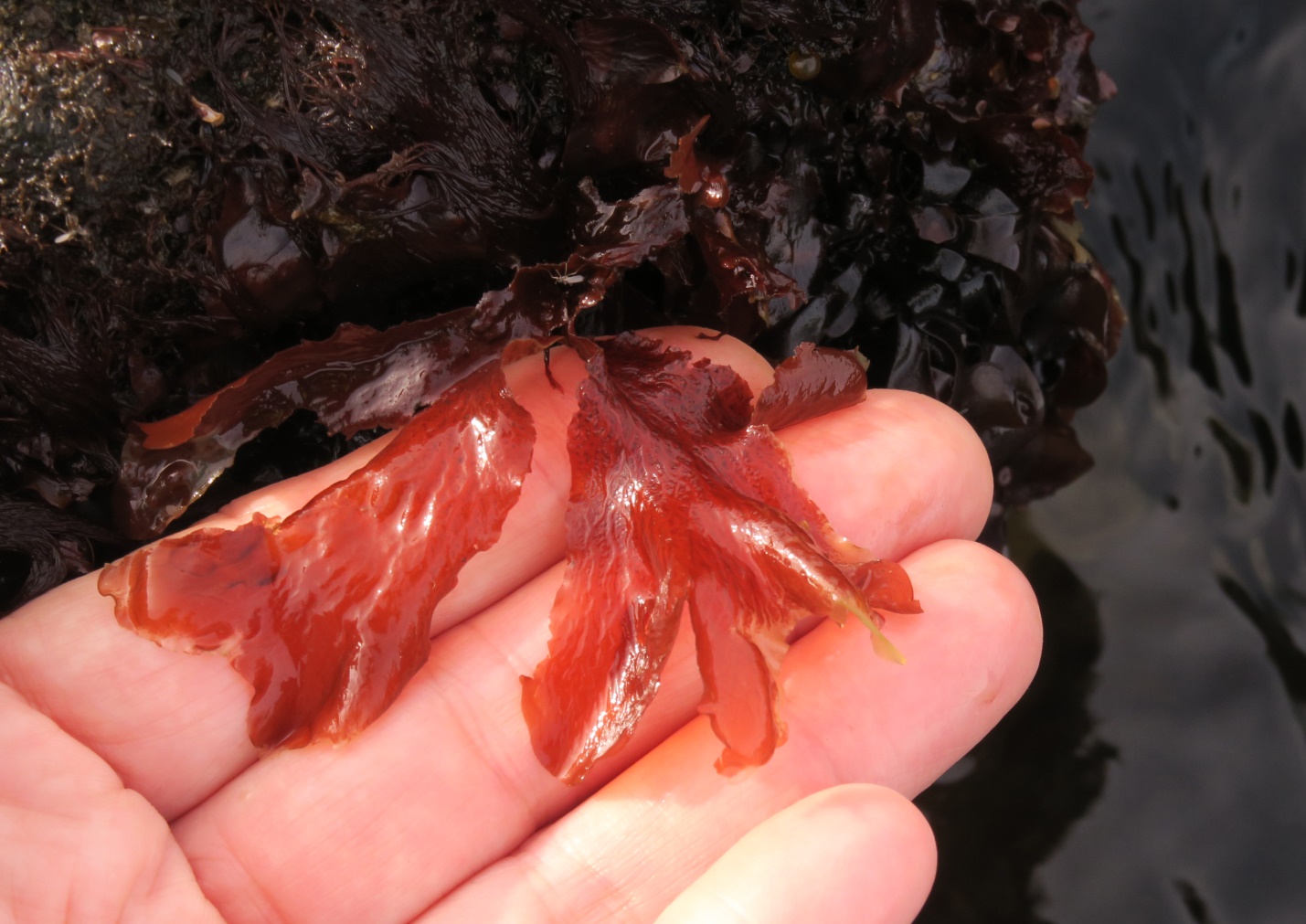
Figure 7: This young thallus is young – its size only a fraction of the maximum achieved in a full growing season. Even at this age, it reveals the key traits of its kind. Point Holmes, Strait of Georgia, B.C., Canada. March 14, 2024. Photo ID 27641 ©Seaweedwhisperings.com
![]()